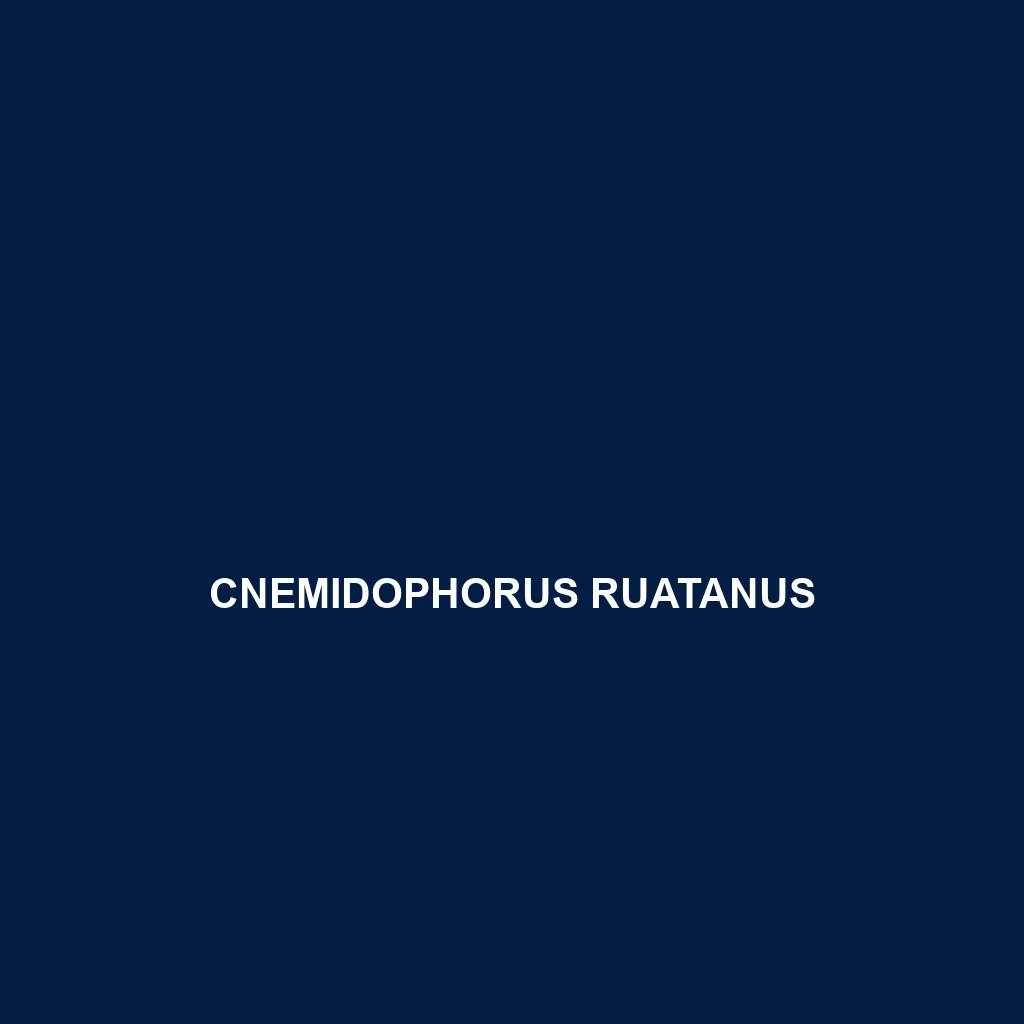Cnemidophorus ruatanus – Species Description
Common Name: Cnemidophorus ruatanus
Scientific Name: Cnemidophorus ruatanus
Habitat
The Cnemidophorus ruatanus, commonly known as the Ruatan whiptail lizard, is primarily found in the tropical and subtropical forests of Roatan, an island off the northern coast of Honduras. This species thrives in warm, humid environments, favoring areas with plenty of sunlight and ground cover such as leaf litter and low shrubbery. Its geographical range is limited, making it a species of interest for conservationists.
Physical Characteristics
This medium-sized lizard typically measures between 18 to 25 cm in length, including the tail. Cnemidophorus ruatanus displays a striking coloration with a base of greenish-brown or gray, adorned with darker brown stripes running longitudinally along its body. Its slender, elongated shape is complemented by a long, whip-like tail, which helps in balance and maneuverability. Distinctive features include its large, expressive eyes and a set of sharply pointed toes that assist in climbing and rapid movement through its habitat.
Behavior
The Ruatan whiptail is known for its active diurnal behavior, making it a fascinating subject for observation during daylight hours. These lizards are often seen basking on rocks or tree branches to absorb sunlight. They exhibit a remarkable agility and speed, utilizing quick darting movements to evade predators. Socially, they may display territorial behaviors, especially during the breeding season, where males engage in displays to attract females and establish dominance.
Diet
The diet of Cnemidophorus ruatanus primarily consists of small insects, spiders, and other arthropods, reflecting its insectivorous feeding habits. They are known to forage actively, using their keen vision to spot prey among vegetation and leaf litter. This species may also consume plant material occasionally, indicating a flexible dietary approach that aids survival in their natural habitat.
Reproduction
The reproductive habits of Cnemidophorus ruatanus are intriguing. The breeding season typically occurs during the warmer months, coinciding with increased insect availability. Females are known to lay clutches of 2 to 6 eggs in sandy areas or under fallen leaves. After laying, the eggs incubate for approximately 60 to 70 days before hatching, with hatchlings emerging fully formed and capable of independent survival shortly after.
Conservation Status
Currently, Cnemidophorus ruatanus is classified as vulnerable due to its limited geographic range and habitat loss resulting from human activities such as deforestation and urban development. Conservation efforts are critical to protect this unique species and its natural habitat.
Interesting Facts
One fascinating fact about the Ruatan whiptail lizard is its ability to reproduce through parthenogenesis, a form of asexual reproduction where females produce offspring without fertilization. This species displays a unique adaptation that allows it to thrive in isolated environments, making it an interesting subject of study in evolutionary biology.
Role in Ecosystem
Cnemidophorus ruatanus plays a vital role in its ecosystem as both predator and prey. By controlling insect populations, these lizards contribute to the overall health of their habitat. Additionally, they serve as a food source for larger predators, thus integrating themselves into the food web and supporting biodiversity on Roatan Island.
